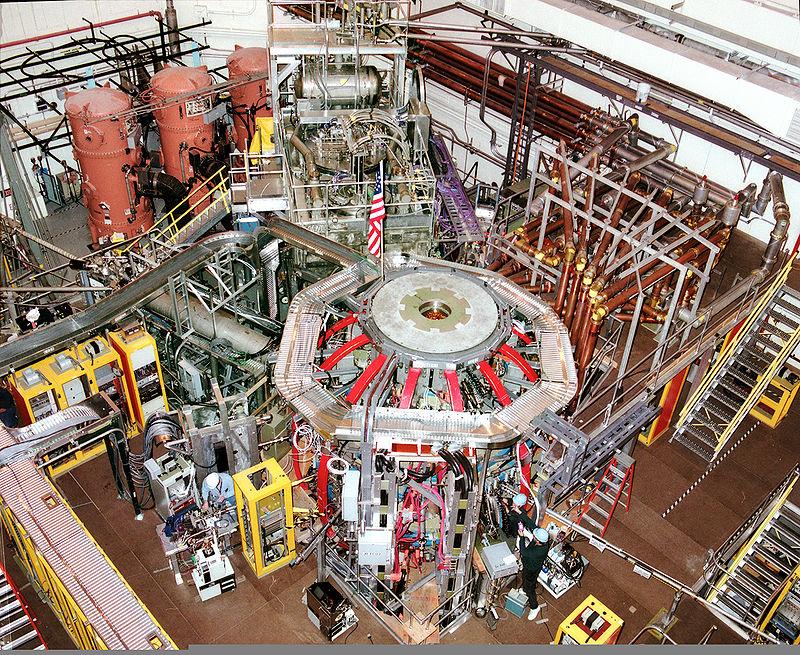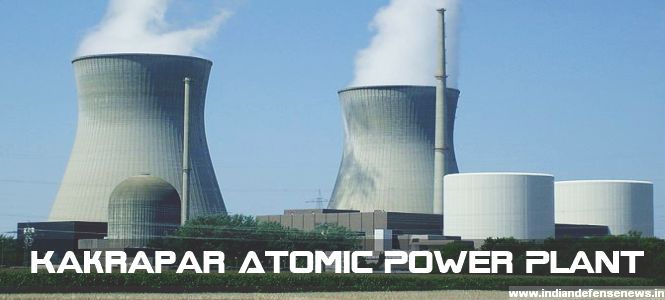
Blog
-
Geiger Readings for Mar 23, 2017
Ambient office = 84 nanosieverts per hourAmbient outside = 106 nanosieverts per hourSoil exposed to rain water = 112 nanosieverts per hourIceberg lettuce from Central Market = 115 nanosieverts per hourTap water = 76 nanosieverts per hourFilter water = 61 nanosieverts per hour -
Nuclear Reactors 270 – New Gamma-Ray Scanner Has Been Developed To Detect Radioactive Contamination In Japan
In March of 2011, there was a massive earthquake off the northeast coast of Japan. The quake caused a tsunami that flooded the Fukushima Daiichi Nuclear Power Plant on the coast of the Fukushima Prefecture. Three reactors melted down and there was a huge explosion in Unit 3 that destroyed Unit 4. Radioactive materials were ejected into the atmosphere and fallout rained down all over Japan. Detailed maps of contamination are important to the cleanup but existing methods of creating such maps were not sufficient. Recent work at Kyoto University seeks to improve the making of contamination maps.
Toru Tanimori is a professor of Physics and Astronomy in the Graduate School of Science at Kyoto University. His latest research has just been published in Scientific Reports. He says that the “… best methods we have currently are labor intensive, and to measure surface radiation accurately complex analysis is needed.”
Tanimori team “… constructed an Electron Tracking Compton Camera (ETCC) to detect nuclear gamma rays quantitatively. Typically this is used to study radiation from space, but we have shown that it can also measure contamination, such as at Fukushima.” His analysis reveals that there are “micro hot spots” of radiation from cesium-134 and cesium-137 around the Fukushima Daiichi Nuclear Power Plant in places which have already been decontaminated and were thought to be free of radioactive materials. As a matter of fact, even existing methods would have been sufficient to show that the cleanup in those areas was not adequate to ensure the safety of the citizens who live there.
Tanimori and his team are employing gamma-ray imaging spectroscopy that is more versatile and robust than previous gamma-ray detection cameras, resulting in a clearer image. Previous use of gamma-ray imaging was error prone and had difficulty pinpointing the exact location of the gamma-ray sources. He said that the key to better images was to take a color picture that included the direction and the level of energy of all gamma-ray sources in the vicinity.
Tanimori says that “Quantitative imaging produces a surface radioactivity distribution that can be converted to show dosage on the ground. The ETCC makes true images of the gamma rays based on proper geometrical optics.” This distribution can then be used to relatively easily measure ground dosage levels, showing that most gamma rays scatter and spread in the air, putting decontamination efforts at risk. “Our ETCC will make it easier to respond to nuclear emergencies,” continues Tanimori. “Using it, we can detect where and how radiation is being released. This will not only help decontamination, but also the eventual dismantling of nuclear reactors.” The latest ETCC available for field measurements is built in the 16 inch × 16 inch × 20 inch base frame with the weight of 88–110 lb and operated with a single PC with 24 V portable battery.
Tanimori’s work will have application far beyond Fukushima and the radioactive contamination of the Japanese countryside. There are contaminated areas all over the world that need to be cleaned up and Tanimori system will be useful in that work.
-
Nuclear News Roundup Mar 22, 2017
USA-based firms Bechtel and GE Hitachi Nuclear Energy (GEH) have today announced the formation of an alliance to offer decommissioning and dismantling services for nuclear power plants in Germany and Sweden. world-nuclear-news.org
Cho Hwan-eik, the chief executive officer of Korea Electric Power Corporation (KEPCO) has confirmed that the company is discussing the possible purchase of Toshiba’s 60 percent stake in NuGen, the company set to build three reactors on the coast of Cumbria in the United Kingdom. nuclearstreet.com
Nuclear power generation capacity in India is expected to reach nearly 15,000 MW by 2024 as the government has expedited the process of setting up new plants, Lok Sabha was informed today. newindianexpress.com
-
Geiger Readings for Mar 22, 2017
Ambient office = 143 nanosieverts per hourAmbient outside = 124 nanosieverts per hourSoil exposed to rain water = 120 nanosieverts per hourBartlett pear from Central Market = 115 nanosieverts per hourTap water = 137 nanosieverts per hourFilter water = 116 nanosieverts per hour -
Nuclear Fusion 30 – New Plasma Control System Under Development At Princeton Plasma Physics Laboratory
One of the big problems with developing commercial nuclear fusions reactors is the control of the plasma. Turbulence develops in the plasma and causes the plasma to move outside of the intended zone of confinement. It can touch the side of the chamber and destroy the symmetrical confinement needed to create fusion. Both magnetic fields and particle beams can be used to control the shape and the circulation of plasma Recent developments may help solve the plasma control problem for certain designs of experimental fusion reactors.
The National Spherical Torus Experiment Upgrade (NSTX-U) is “an innovative magnetic fusion device that was constructed by the Princeton Plasma Physics Laboratory (PPPL) in collaboration with the Oak Ridge National Laboratory, Columbia University, and the University of Washington in Seattle, WA. The NSTX-U is being used to study the physics principles of spherically shaped plasmas — hot ionized gasses in which nuclear fusion will occur under the appropriate conditions of temperature, density, and confinement in a magnetic field.”
The NSTX-U has a neutral particle beam system which affects plasma rotation by colliding with the plasma and transferring momentum to it. There are two emitters that each have three neutral beam sources. One emitter is aimed at the core of the plasma while the other emitter is aimed at the edges of the plasma cloud. A set of magnets gives the operators further control of the plasma rotation. Controlling the rotation of the plasma helps to prevent instabilities from forming that degrade the magnetic fields inside the tokamak and allow the plasma to touch the side of the confinement vessel and dissipate. The effects of the neutral beams and the magnets are balanced to prevent abrupt changes of plasma velocity. The goal is to balance the amount of heat stored in the plasma with the rotation of the plasma.
Imène Goumiri, the scientist who led the work, conducted research at the U.S. Department of Energy’s (DOE) Princeton Plasma Physics Laboratory (PPPL) and now is a physicist at the University of Wisconsin-Madison. She said “When designing fusion machines, it’s becoming more and more important to use control systems and modeling techniques taken from the world of aeronautics engineering. What’s new is that these tools have now been applied to plasma physics problems; that’s what makes this research unique.”
Goumiri developed a feedback control system for the NSTX-U. Sensors will gather information about the behavior of the plasma which will then be analyzed by special computer algorithms. The algorithm will then control both the neutral particle beams and the magnets in real-time. The control of beams and magnets in the new system was simulated by a computer program developed at PPPL. The tests showed that algorithm could successfully control the stored energy and plasma rotation in a way that increased the stability of the plasma. The next step is for the researchers to actually use the new feedback system to control the NSTX-U. This research project marks the first time that particle beams and magnets have been used together to control the rotation profile of the plasma in a tokamak.
Photo National Spherical Torus Experiment Upgrade By Princeton Plasma Physics Laboratory
-
Geiger Readings for Mar 21, 2017
Ambient office = 94 nanosieverts per hourAmbient outside = 73 nanosieverts per hourSoil exposed to rain water = 84 nanosieverts per hourAvocado from Central Market = 107 nanosieverts per hourTap water = 82 nanosieverts per hourFilter water = 73 nanosieverts per hour -
Nuclear Reactors 269 – Strange Corrosion Found At Indian Kakrapar Atomic Power Station
There are two Indian two hundred and twenty watt Pressurized Heavy Water Reactors (PHWR) at the Kakrapar Atomic Power Station near the city of Vyara in Gujarat State in India. KAPS-1 went online in 1993 and KAPS-2 went online in 1995.
A year ago, KAPS-1 developed a leak of heavy water coolant. An automatic leak detection system failed to detect the leak and both reactors were shut down manually. India’s Department of Atomic Energy (DAE) said that no one was exposed to radiation and no radiation leaked out of the plant.
Later an investigation of the incident but the operators could find no fault in the automatic leak detection system. There were some news stories that claimed that the operators of the plant had shut down the leak detection system to save money but these charges proved to be unfounded.
Further investigation found that four large cracks had developed on a coolant pipe which caused the leak. The investigators also found that a ” nodular corrosion contagion” of pockmarks reminiscent of smallpox scars had spread over all the coolant pipes in both of the reactors. The pipes are made of a rare zirconium-niobium alloy. They are hard to access for examination.
Some of the pipes are exposed to high-temperature heavy water while other pipes are only exposed high-pressure carbon dioxide. The origin of the corrosion is unique and has not been found in the pipes of other Indian reactors of similar construction. At this point, it is suspected that the corrosion is connected somehow to the carbon dioxide which has been very stable in high radiation environments.
Close examination of the KAPS-2 reactor showed that it had experienced a similar heavy water leak ten months before the KAPS-1 leak. The piping for both reactors was disassembled and shipped to the Bhabha Atomic Research Center (BARC) in Mumbai for detailed failure analysis. As part of their investigation. The BARC examined the piping for sixteen other Indian nuclear power reactors with the same PHWR design as the KAPS reactors. The results of that investigation found that the only reactors where the smallpox-like corrosion developed were the KAPS reactors.
During routine maintenance on the KAPS in 2012, two pipes from the cooling system had been removed from the plant and stored in a warehouse. BARC investigators went to the warehouse to check the old pipes. Interestingly, the two pipes from 2012 showed no sign of the nodular corrosion now present at the KAPS.
Mystified by the development of the corrosion at the KAPS, BARC has reached out to other members of the international nuclear power industry for help. The International Atomic Energy Agency and ten other global forums for nuclear power have been contacted about the developments at KAPS. Twenty-nine PHWRs are operating in Canada, Argentina, Romania, China, South Korea and Pakistan and none of them show any signs of the corrosion found at KAPS. So far, the international contacts have no answers.
The BARC investigators are experimenting with tubes of the zirconium-niobium alloy in high-pressure carbon dioxide and high radiation environments. KAPS obtains their carbon dioxide from a “Naptha cracking unit” and it may be possible that the carbon dioxide was contaminated with hydrocarbons. The BARC investigators are adding different contaminants to carbon dioxide in the hope that they will find a combination of carbon dioxide and contaminants that will cause corrosion similar to what has been found at KAPS.
-
Nuclear News Roundup Mar 20, 2017
The European Commission has approved Belgian plans to support the long-term operation of three nuclear reactors after finding measures to compensate operators Engie-Electrabel and EDF Belgium are in line with European Union (EU) rules on state aid. world-nuclear-news.org
Nuclear secret-leaker claims Israel ‘hounding’ him. Mordechai Vanunu confident he will not serve in prison again, says restrictions on him unnecessary as he has not been in plant in 30 years. israelnationalnews.com
The selection process for Australia’s first national low-level radioactive waste centre has turned into a three-way race after the Federal Government agreed to formally consider two properties near Kimba in addition to a previously short-listed block of land at Barndioota, near Hawker. adelaidenow.com.au
-
Geiger Readings for Mar 20, 2017
Ambient office = 128 nanosieverts per hourAmbient outside = 98 nanosieverts per hourSoil exposed to rain water = 97 nanosieverts per hourHeirloom tomato from Central Market = 99 nanosieverts per hourTap water = 82 nanosieverts per hourFilter water = 79 nanosieverts per hour






